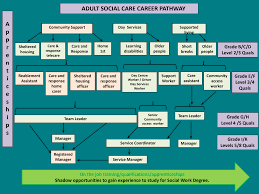
A career ladder is a metaphor for the progression of job candidates and employees from lower to upper levels. It shows the gradual climb from entry-level jobs to higher pay, greater responsibility, and more authority. Career ladders are a useful management tool, as they show employees and candidates how to move up in the organization. They can also help reduce bias and eliminate "gluework".
Job ladders can be a great management tool
Job ladders are a management tool that can help you understand the responsibilities and skills of different roles within your organization. You can also use them to identify entry-level responsibilities and management-level roles. Job ladders are a great tool to help you make better hiring and promotion decisions. These tips will help you start a job ladder if you don’t know how to do it.
Both employers as well as employees can benefit from career ladders. They encourage growth and development, which is a key factor in attracting and retaining top talent. They are eager to learn and motivated by the opportunity to progress. These opportunities will help retain top talent and keep them satisfied.

They assist employees and candidates in advancing to higher grades.
A career ladder is a great tool for guiding employees and candidates alike. It clearly describes the steps necessary to reach each stage. This helps managers make consistent, objective decisions. Lack of growth opportunities is one of the main reasons that employees leave. A career ladder will make it clear to candidates and employees that career development is their top priority. They will be more engaged with the path and more likely to stay.
It is important to have a detailed plan of implementation for career ladders. This plan should include a timeline as well as specific resources for professional learning. Managers and employees need to know how they can advance in their career ladder.
They help mitigate bias
A workplace must ensure that everyone is treated fairly and equally. This is one of the best ways to fight bias. Despite the best intentions of managers, unconscious bias can impact the career development of their team members. Employers can counter this by using career ladders, and incorporating global skills-based criteria to the compensation formula. Career ladders can help reduce bias and increase employee satisfaction.
Retention is also improved by career ladders. Because they provide employees with guidance about their future, career ladders can help them to stay employed. When a potential employee looks up a career ladder, they can see that there will be more money, responsibility, and authority for them in the near future. This makes it easy to move up the corporate ladder.

They eliminate glue work
A career ladder avoids glue work. It also reduces bias. The engineer was getting excellent performance reviews. She believed she was on track to becoming a senior engineering engineer. She was solving problems in the field for staff engineers and doing the work required by senior engineers. This work is not enough to get promoted in the company. They need quantifiable technical and code work. However, her manager did not tell her that her work was not appropriate for promotion.
While glue work can be a low-cost job for businesses, it won't improve your technical skills. It's not an extremely skilled job and it is easily replaceable. This is why career ladders have become so important. Glue work pays low, is simple to do, and is inexpensive to train.